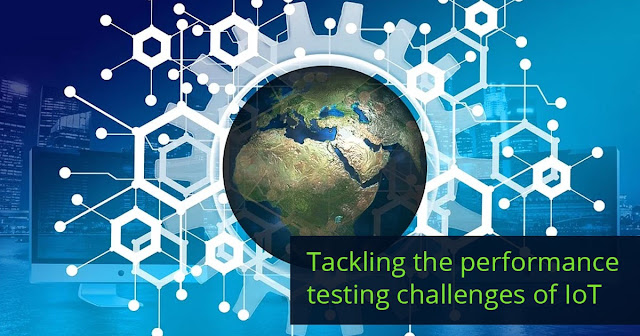The digital
age aka industry 4.0 has been redefined by intelligent solutions that are
merging the digital and physical worlds across verticals. These intelligent
solutions are leveraged by organizations to enhance scalability, enable
customization, realize efficiencies, improve customer experience, and achieve
ROI. The Internet of Things or IoT technology is driving synergies between
smart machines, industrial processes, and software applications. This requires
organizations to build end-to-end systems with enhanced capabilities, driving
outcomes such as product enhancement, innovation through collaboration, greater
operational visibility, better equipment performance, and quicker decision
making - all based on contextual data obtained in real-time.
The
Internet of Things (IoT) connects smart devices to the internet using sensors.
It also connects such devices to digital technologies constituting big data,
artificial intelligence, and wireless networks. The main objective of
establishing such a network is to collate and share intelligence among devices
without any human intervention. The data obtained from IoT helps organizations
to analyze their digital ecosystem and pre-empt equipment malfunction,
downtime, and other glitches. It gives them insights into the performance of
products and how they are utilized by the users. The insights can be leveraged
to enhance the differentiating features of products, create value chains, and
build new business models to drive growth.
IoT helps
organizations to
- Track and monitor assets in real-time with respect to their performance and availability
- Analyze data from sensors for predictive maintenance
- Take critical business decisions
- Generate greater efficiency, enhance safety and customer experience and create new business models and revenue streams
However,
IoT can present a host of challenges, especially concerning performance
testing.
Challenges
in application performance testing of IoT devices
- Increased complexity: Since data communication takes place between smart devices such as televisions, air conditioners, washing machines, refrigerators, or smartphones, they need to be considered for performance testing. However, the plethora of devices can increase the level of complexity while drawing a specific performance testing strategy. Also, recording data from mobile devices, and web browsers, among others by using a load tester is relatively easy compared to testing the above-mentioned devices without changing their settings.
- Tackling the impact of factors: In IoT, factors such as network bandwidth, load, latency, or packet loss, among others can be critical when it comes to executing application performance testing. For example, if the above-mentioned factors are not tested for a web or mobile application, the same may crash.
- Stateless operation: Typical software applications are connected through a sequence of steps aka context or state. However, since IoT sensors do not follow any well-defined context, the IoT applications ought to manage such context or state elements.
- Diverse device interfaces: With changes in IoT devices and the addition of new ones with different connection protocols and data formats, the performance testing methodology needs to change as well. This is because every new addition would require the execution of performance testing.
- Absence of subjective feedback: In most testing procedures, data can be inserted to test the effectiveness of UI or response time. However, the same cannot be provided by the IoT networks.
The
performance testing approach to tackle the challenges?
To begin
with, testers should prioritize test cases, especially the key areas that can
take the longest testing time. Testers must understand to choose such areas as
the consequences of performance issues can be devastating for some businesses
compared to the rest. Also, given the fact that a great deal of standardization
has taken place in the technology field, the testers should ensure their
compliance while providing performance testing services.
Any updates being pushed for these devices would present challenges of security
and usability. The core functionality of IoT devices should include monitoring
their current status as they are connected to a network 24x7.
Implementing
IoT can include devices that do not have IoT in them. These may include
communication networks, instrumentation, and storage, among others. The
complexity of such devices and the lack of an IoT label would require testers
to first understand how the pieces would fit in the jigsaw. Thereafter, testers
should streamline the complexity and communicate the importance of each device
and make it work.
Conclusion
The
efficient way of driving the performance of an IoT based application is to
implement a robust testingplan. It should be followed by determining the peak
load factor faced by the device at any point in time. The testers should use
appropriate testing tools to validate performance efficiently. By implementing
performance testing, businesses can integrate IoT in their processes and
achieve success.

No comments:
Post a Comment